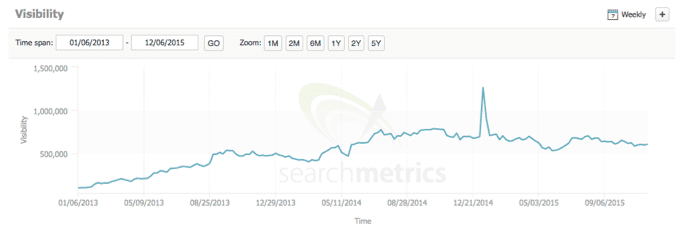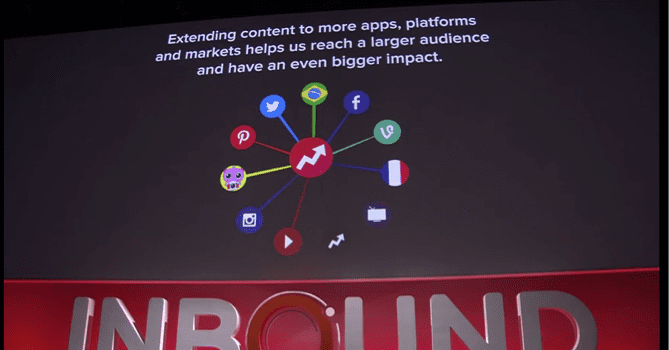Content Marketing Strategy Lessons from Buzzfeed


5 content marketing lessons and insights from Buzzfeed founder Jonah Peretti
Buzzfeed is a modern publishing phenomenon. Best known for listicles, GIFs and click-bait headlines, the company has now diversified into new areas, including politics, world news and even motion pictures.
According to Buzzfeed, 2014 revenues surpassed $100 million and their post in February asking people to vote on the colour of a dress has generated over 38 million views. Buzzfeed hasn’t found success by chance. Their business model and overarching content strategy has enabled them to consistently reach and engage a wide audience with a diverse set of stories, pictures, quizzes and breaking news.
What makes Buzzfeed so compelling as a publishing case study (compared to more traditional publishers such as the Guardian and the New York Times) is their success in the digital era and particularly their popularity among Millennials. As a result, Buzzfeed’s prominence and relentless innovation provide content marketers with some excellent insights into what it takes to build a content marketing strategy that will engage and drive action.
Content marketing inspiration from Buzzfeed
It’s worth mentioning up front that as a publisher content is at the heart of everything Buzzfeed does and therefore ‘content marketing’ is unlikely to be a practice the company consciously adopts.
However, anyone planning to implement a content marketing strategy can learn from Buzzfeed’s content philosophy and framework. Therefore, as a follow-up to Alex Heaton’s excellent article from 2014, this post aims to summarise some of the main insights from Buzzfeed co-founder Jonah Peretti’s talk at Inbound 2015 in September:
1. Establish a content creation process
Buzzfeed have defined a content creation process and philosophy that allows them to consistently create content that resonates with their audience. Some of the elements of Buzzfeed’s content creation process include:
• Establish editorial integrity – does the content meet brand guidelines? Is it accurate/ factually correct?
• Select appropriate content format types – Quizzes? Lists? Video? Articles? What content format adds value and contributes to the overarching objective of the content?
• Choose channel/ platform – where will the content live? Will it be hosted on the website? Or optimised for a particular social network or channel?
• Review content promotion options – will content be promoted organically and/ or paid? What channels will be used to distribute content and build awareness?
• Build a measurement framework – how do you know whether your content is working? Page views and dwell time are weak metrics (to gauge success, Buzzfeed looks at a wide range of metrics, including whether content spreads internationally, works across multiple platforms or connects people in meaningful ways)
Buzzfeed’s content creation process appears to be working, as evidenced by the steady increase in organic search visibility over the past three years:
2. Define the purpose for the media you’re using
It’s common for brands to create content without considering the objective for how it will be used and consumed by the audience for which it is intended.
Jonah Peretti encourages content creators to put real thought into how an audience will actually use the media being shared and what utility it will add to their lives.
For example, Buzzfeed noticed that people were consuming content at work and this insight led to the ‘bored at work’ network, content created specifically to help people get through the working day!
Buzzfeed are always experimenting with different content formats, such as listicles, quizzes and videos to educate, entertain and help their audience. The growing trend of media convergence (e.g. mobile/social, mobile/social + video) means that Buzzfeed look for opportunities to create content in formats that will help their audience get the most from the content they’re consuming.
3. Create content that works on the internet
This might seem quite obvious but it’s surprising how often content produced for the internet doesn’t quite work.
Buzzfeed was built for the social/ mobile world and today 70% of users access the site via mobile. This is how people consume media today so it’s no coincidence that Buzzfeed created listicles so that people could more easily browse and navigate content on their mobile devices.
Buzzfeed have also identified that emotion is a key driver of success. Content that makes people think, laugh or cry generates intimacy and connection, which in turn helps content spread as people share with a wider audience. This is the essence of ‘shareable’ content.

For example, ‘Basset hounds running’ is both ‘cute’ and ‘LOL’, and whilst friends sharing the content may not remember the specific joke at a later point in time, they do remember laughing together and feel closer as a result.
4. Embrace the distributed content model
Whilst it’s still essential that brands embarking on a content marketing strategy have an effective owned media presence, it’s not always necessary to drive all traffic from outposts through to a central content hub.
Buzzfeed have adopted a distributed content model, a system whereby content is created to live natively on various channels, platforms and apps to ensure that content goes to where the audience is rather than forcing them back to the website.

For example, the Obama video was created only for Facebook and didn’t exist anywhere else. This is an output from Buzzfeed’s experimental social content team BFF who produce a range of original content solely for platforms like Tumblr, Imgur, Instagram, Snapchat, Vine and messaging apps.
5. Iterate, learn and adapt
Buzzfeed have built a process that empowers smart people with a deep connection to their audience to continually look at ways to iterate, expand and push the brand forward. The company has become increasingly cross-platform and as a result there are now new opportunities to learn about what is working on each platform and how these insights can be used to adapt and optimise content across multiple channels.
As media becomes more distributed and apps become more important, there is a need to learn everywhere possible and build a network of channels, platforms and apps. The advice from Buzzfeed is to experiment with new ideas, learn and apply these to everything the network is doing.
This process will help content marketers to make better stuff, make a bigger impact and serve the audience more effectively.
From our sponsors: Content Marketing Strategy Lessons from Buzzfeed



